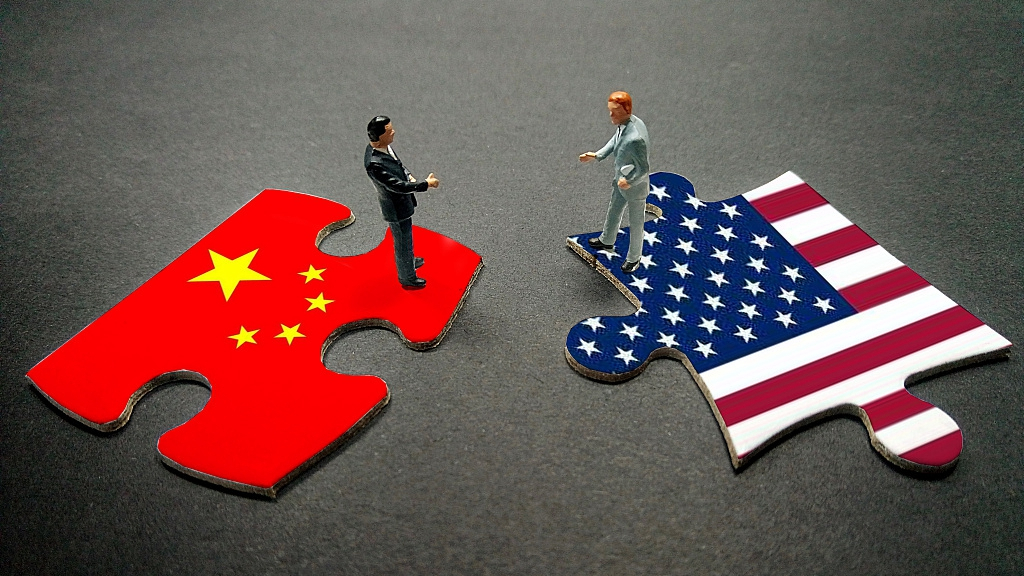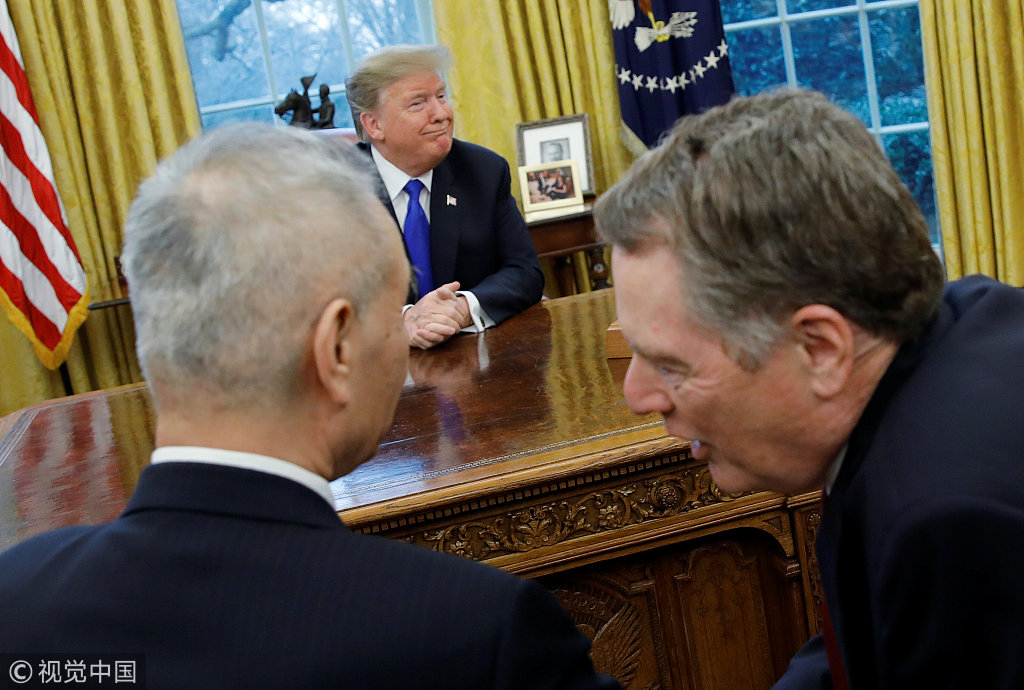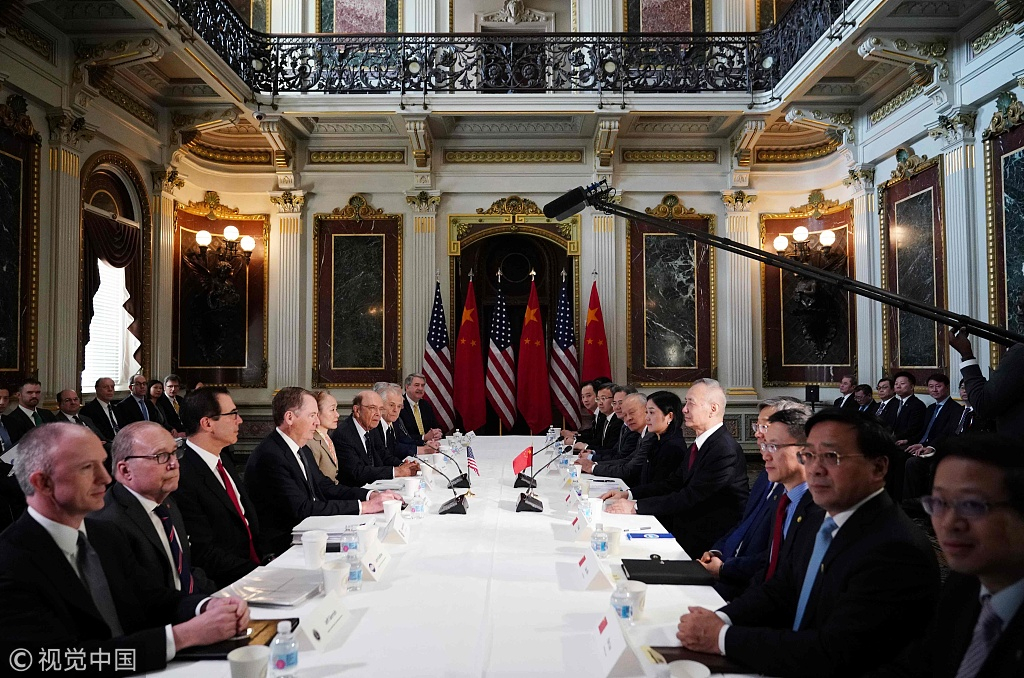
Opinion
20:17, 10-Mar-2019
China-U.S. restraints: Who needs a trade deal?
Ghanbar Naderi

Editor's Note: Ghanbar Naderi is an Iranian journalist, a current affairs commentator, a documentary filmmaker, and a member of the Writers Guild of Great Britain. The article reflects the author's opinions, and not necessarily the views of CGTN.
Some media outlets in the region and the West are trying to give the impression that China is desperate for a trade deal with the United States.
In reality, it's the exact opposite. U.S. President Donald Trump and his political and foreign-policy elites are the ones desperate for anything positive. Signing a trade deal with Beijing will serve their political interests in this darkest hour, ahead of the 2020 election.
All in all, the rapid growth of U.S. trade deficits has nothing to do with the Asian giant or its increasing global trade and practices.
They simply reflect the failure of the Trump administration's trade policies, as well as the negative impact of tax cuts and spending increases. Data from the Federal Reserve should substantiate that.
The U.S. economy is set to a downturn this year because total American household net worth fell by 4 trillion U.S. dollars at the end of 2018.
This decline is the single largest quarterly dollar drop on record. The loss of 4 trillion U.S. dollars could further lead to a drop in consumer spending and a corresponding contraction of economic growth for the United States.
The International Monetary Fund (IMF) assumes worse still, given trade uncertainty and anticipation of future Federal Reserve interest rate hikes, and monetary policy tightening. The IMF predicts that the U.S. current account deficit – the broadest measure of U.S. trade in goods, services, and income – will nearly double by 2022.

Chinese Vice Premier Liu He (L) listens to U.S. Trade Representative Robert Lighthizer (R) during a meeting with U.S. President Donald Trump in the Oval Office at the White House in Washington, U.S., February 22, 2019. /VCG Photo
Chinese Vice Premier Liu He (L) listens to U.S. Trade Representative Robert Lighthizer (R) during a meeting with U.S. President Donald Trump in the Oval Office at the White House in Washington, U.S., February 22, 2019. /VCG Photo
The sentiment is also shared by the U.S. Census Bureau. It concludes that the rapid growth of U.S. trade deficits reflects the failure of the Trump administration's trade policies, as well as the negative impacts of tax cuts and spending increases, "which have sharply increased the federal budget deficit, and tightening of U.S. monetary policy, resulting in upward pressure on interest rates and the real value of the dollar."
A rough translation of all this should go like this: America's 45th president and his interventionist foreign policy team need to find ways to offset these disturbing trends. Trump promised during his 2016 campaign to narrow the trade deficit and encourage more manufacturing jobs to return to the mainland.
His trade war with China and tariff restraints with the European Union (EU) amounted much ado about nothing much. They did little to reduce the massive imbalance in trade flows between the U.S., China, and the EU.
That's because the most important cause of U.S. trade deficits – which will continue to grow this year – is the persistent rising dollar, persistent trade surpluses, Trump's populist policies, as well as large structural surpluses accumulated by the European Union.
At the same time, data from the Federal Reserve shows that "tax cuts will add more than 1 trillion U.S. dollars to U.S. fiscal deficits over the next decade, putting upward pressure on interest rates and the U.S. dollar."
This has to be a momentous failure for Trump administration policies. This trend, this continuing upward pressure on the trade deficit, as well as downward pressure on employment and output in U.S. manufacturing, are the reasons why President Trump and his team need to settle for a deal with the Asian behemoth.

Top Chinese and U.S. officials participate in a round of trade talks in Washington, U.S., February 21, 2019. /VCG Photo
Top Chinese and U.S. officials participate in a round of trade talks in Washington, U.S., February 21, 2019. /VCG Photo
Hope springs eternal, but contrary evidence keeps emerging, though. Robert Lighthizer, Trump's trade representative, who is also leading Washington's current trade negotiations with Beijing, has told reporters that Trump will only accept a trade deal that is "deep, structural and enforceable."
He is free to say "there's no agreement on anything until there's agreement on everything." But he is wrong to imagine that if China agrees to a level playing field in trade, it is going to solve the structural problems of the United States.
Given the structural problems in the U.S. and China's rising global trade position that is based on shared future and prosperity, the isolationists in Washington are not in a position to force a stronger China to capitulate.
Judging by the recent comments made by officials in Beijing, the world's second-biggest economy is willing to make adjustments and accept some short-term pains, such as the economic harm that tariffs inflict on its manufacturers. But it won't be coerced into signing a deal it doesn't want.
In many respects, the former businessman-turned-president, including some influential members of his own party, whose hawkish stances run in the opposite direction, are suffering from numerous setbacks both at home and abroad.
One way or another, Trump will have to settle for a swift deal with the Asian giant in order to shore up his base in the industrial states that delivered him the presidency.
If the recent facts and statistics by the IMF, the Federal Reserve, and the U.S. Census Bureau are any indication, an end to the ill-fated trade dispute with China could help to some extent address part of America's global trade imbalances. It's in their best economic interests.
(If you want to contribute and have specific expertise, please contact us at opinions@cgtn.com.)

SITEMAP
Copyright © 2018 CGTN. Beijing ICP prepared NO.16065310-3
Copyright © 2018 CGTN. Beijing ICP prepared NO.16065310-3